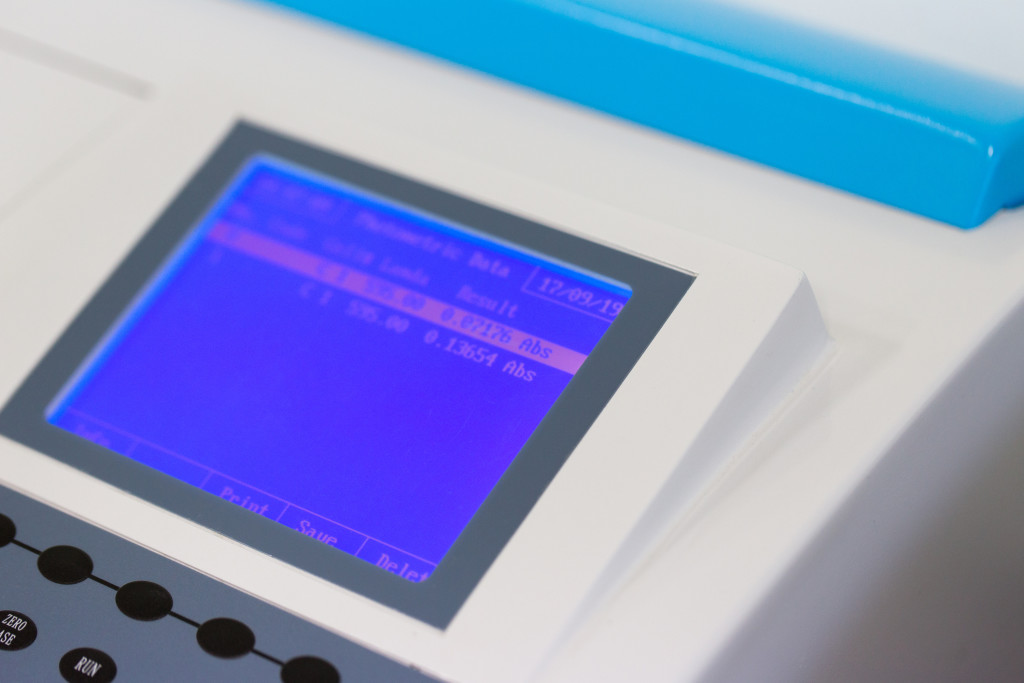Quick Summary, please note these are just suggestions that we have heard over the years:
- The day of the trip avoid touching things (especially public items like gas pumps, door handles etc)
- Avoid perfumed cleaning products
- This will sound silly but first and foremost, DO NOT bring any illegal substance into a Correctional Institution
NOTE: Any views or opinions represented in this blog belong solely to the FedPhoneLine staff. WE ARE NOT Psychologists or Therapy Professionals, all data and information on these blogs is for informational purposes ONLY.
In the comments section we are hoping that people can outline their experiences and foster communication that will assist others going through similar events.
When visiting a friend or loved one in a Federal Institution chances are you will be tested by an ion scanner. Here’s the boring part…an Ion Scanner is actually an Ion Mobility Spectrometer, which is an analytical device capable of separating, ionizing and detecting molecules. Spectrometers are mostly used in scientific laboratories and for military and security purposes.
In the case of Federal Institutions visitors are asked to provide an personal article (for example your keys or glasses) to be swabbed. That swab is then placed in the ionizer to be analyzed for narcotics…here is where the trouble lies…
These spectrometers are INCREDIBLY sensitive devices and can detect substances that have the same structures as narcotics (analogous substances). In the CSC Article :”Use of Ion Scanners in Correctional Facilities: An International Review” it states:
“One drawback of IMS technology is that it measures drug particulates down to the nanogram, identifying ‘false positives frequently (SCA Inc, 2001)”
In our opinion many of the substances that ‘hit’ on the ion scanner are these analogous substances. For instance many perfumes or scented cleaners may contain aromatic compounds similar in molecular structure to illicit narcotics, which could set of the scanner.
Many people drive far distances to visit their loved ones and getting turned away is humiliating and heart breaking. It’s stressful enough being in those places, the ion scanner adds another level of stress! We’ve outlined some tips that we think can help you.
Please Note this is information we have gathered from men and women who visit institutions, nothing is 100% guaranteed (false positives occur in everything from pregnancy tests to cancer screenings) but we hope this helps.
Don’t handle illicit substances!
Yes, it’s an obvious statement but the ion scanners are there to keep illicit substances out of institutions (as annoying as they may be their purpose is noble). If you handle an illicit substance, chances are it’s going to go off. Don’t handle illicit substances and it shouldn’t (keyword shouldn’t go off).
Wash your hands:
Before the visit it is probably a good idea to wash your hands, please write in the comments below if hand sanitizer is a good idea. The same goes for your glasses, keys and jewellery.
Make sure the operator is wearing gloves:
The operator of the ion scanner should be wearing gloves to avoid cross-contamination.
Avoid wearing perfumes:
It is best to be unscented when you visit an incarcerated individual, not only so the ion scanner is not set off but a common courtesy to people in the visiting area (not everybody enjoys Chanel No. 5!). It may be a good idea to stay away from gels and hairsprays as well.
Avoid touching anything:
I tried to look about “how many times does a $20 bill change hands” it depends, especially since Canadian bills are newer but the answer ranged anywhere between 1,000 and 6,000 times. Let’s be conservative and say that any bill in your wallet has been touched at least 200 times. How many of those people use narcotics or prescription medication?… How many people touched the Gas station pump before you did? You get the picture, try to do everything you can to avoid foreign surfaces.
Other Prescriptions:
As with perfumes and hair products, certain medications may set off the ion scanner, it would be a good idea to inform the staff of any medications that you are currently taking so that they are aware and can make any necessary adjustments, this is known as a Risk/Threat Assessment (TRA). They will look at the inmates charges (if they are inside for drug trafficking chances are your visit will be denied), past visitor history, etc.
If the unthinkable occurs and you do hit on the ion scanner there should be an alternative procedure (perhaps someone with more information can highlight in the comments below). You should be able to request to be evaluated by a different procedure (either physical pat down or perhaps use a drug sniffing dog). Or there should be a second scan using a different item. There should be procedures in place incase situations like these occur and if anybody has this information please share the link below.
The institution also will interview you to try and determine the cause for the ion scanner alert and much of the time if this is your first instance, you will be allowed to go through (though you may have to sit in an assigned area). If you get a hit on your second or third visit you may be denied the visit (we have heard numerous tales of this occurring), which is unfortunate for the people who are doing nothing but trying to be supportive to an incarcerated individual.
The greater issue is that procedural information seems difficult to find and from speaking with people who have been approved/denied visits, it seems every institution does their visitation protocol differently which makes it hard to assess the proper procedure if one hits upon the ion scanner.
Hopefully the information in this document is helpful.
Cited Sources
Johnson, S. & Dastouri, S. (2012-07-31). Use of Ion Scanners in Correctional Facilities: An International Review http://www.csc-scc.gc.ca/research/005008-rr11-01-eng.shtml


